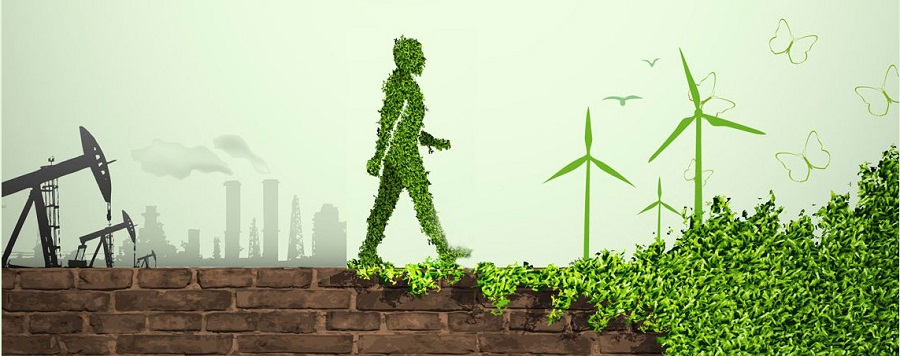The world’s carbon emission must be net-zero by around the mid-21st century (2040-2075). Accelerated deployment of the new renewables and efficient technologies would transform the pledge of a Carbon-Neutral future into reality. Achieving a net-zero carbon emission is the major goal, countries are striving hard to achieve. Several companies, organizations, and industries have already started this procedure. These companies have set a target of complete carbon neutrality in the coming years.
Recent Developments
Today, there are four technology pathways for decarbonization: electrification, hydrogen, bioenergy, and carbon capture, utilization, and storage (CCUS). Hydrogen-based fuels will provide more than 6% of the cumulative emissions reductions needed to reach net-zero in the coming years. Electric Vehicles have proved to be cheaper in use. Using energy coming from renewable sources has reduced over two-third of carbon emission. Countries like Norway have taken the lead in this and permit the scale of only electric or zero-emission vehicles.
The Recent International Railway Summit this time discussed specifically the need for decarbonizing challenges and the steps to be taken to achieve the same. Railways will play a pivotal role in the green revolution and the transition process to net-zero emissions. The summit also discussed various ways of reducing CO2. An alternate solution was also discussed for a parallel solution to affordable, clean, and seamless transportation. The Indian Railways is also expected to be fully electrified by the year 2030 for a net-zero proposal.
Last December, TERRE Policy Centre (A Non- Profit Organisation) in partnership with the All India Council for Higher Technical Education (AICTE) discussed the climate ambition event- the carbon neutrality pledge for educational institutes for the net-zero mission. This was something very new initiative in the world, as universities across India took a pledge for neutrality. TERRE Policy Centre under its Smart Campus Cloud Network-SCCN-is catalyzing the accelerated action. It is constantly working under the pledge to unleash the high-octane energy of youth in educational institutes.
Role of Technology
Electronics all together will play a major role in the neutrality process. Some appliances are equally responsible for the emission of greenhouse gases in the atmosphere. Digital Technology will play a crucial role in enabling the government’s net-zero carbon emission targets by 2050. Technology will reduce over 15% of global emissions, and can help us do things differently. Moreover, it can orchestrate the transition to a low carbon society in areas like logistics, consolidating deliveries.
The greenhouse emissions in India is still increasing. The good point is that the country has committed to reducing emissions. Energy efficiency programs like the Ujala scheme for LED bulbs, the Krishi Sinchayee Yojana for agriculture proved to be a lot efficacious and saved a lot of emissions too. Initiatives like an electric vehicle, fuel efficiency, water pumping in cities also played the role of an impetus.
Industrial Analysis
Last Month, Mitsibushi Heavy Industries Engineering joined with Technology Centre Mongstad to test the possibilities of carbon capture in Norway. They tested a proprietary solvent (KS-21) for this process. KS-21 has several advantageous properties such as lower volatility and greater stability against degradation. The newer solvent will enable reduced running costs and other economic benefits.
Tech giants like Accenture and Microsoft also collaborated for a Net-Zero Carbon Emission in the United Kingdom. Energy companies will thereby lower the cost of decarbonizing. This will be underpinned by open data, artificial intelligence (AI), and a workforce equipped with digital skills.
The only way out to a clean and green environment with zero-emission is completely eradicating CO2 using Carbon Capture and Carbon Storage (CSS). CCS refers to capturing CO2 from point sources, transporting it to preselected locations, and storing it underground. Organisations should necessarily identify centrally-owned generating stations responsible for most of the emissions. In addition, it should also help them with setting up these CCS units in the respective plants.
Complete neutrality can never be achieved with decarbonizing the power sector. Applications like nuclear beyond power generation, production of low carbon heat, hydrogen, and other synthetic fuels have to be considered for significantly expanding market opportunities. These steps are equally efficient for achieving net-zero emissions.
Nuclear Power also scientifically offers a solution for low-carbon hydrogen production through the process of electrolysis. It globally is still in a “catch-up” phase. It is economically attractive with a substantially lower tariff than wind and solar. The target of achieving carbon neutrality will create opportunities for both renewables and nuclear.
Cheaper Carbon Capture Is On The Way
With the rapid approach for zero-emission, chemists today innovated a method to seize carbon dioxide. Further, it would also reduce expenses by 19 per cent as compared to the contemporary commercial methodology.
Recently, researchers from the U.S. Department of Energy’s Pacific Northwest National Laboratory along with Fluor Corp and Electric Power Research Institute described the properties of the solvent known as EEMPA which reduces the energetically expensive demands by traditional solvents. EEMPA has some promising qualities and can capture carbon dioxide without the high water content. It is water-lean, and it’s much less viscous than other water-lean solvents.
For $400-$500 million per unit, commercial technology can capture carbon at roughly $58.30 per metric ton of CO2, according to a Design of experiments (DOE) analysis. EEMPA can absorb CO2 from power plant flue gas and later release it as pure CO2 for as little as $47.10 per metric ton, offering an additional technology option for power plant operators to capture their CO2.
The Pacific Northwest National Laboratory team also plans to produce 4,000 gallons of EEMPA in 2022. It is also set to analyze at a 0.5-megawatt-scale inside testing facilities at the National Carbon Capture Center in Shelby County, Alabama. This project is led by the Electric Power Research Institute in partnership with Research Triangle Institute International. They will continue testing at increasing scales and further refine the solvent’s chemistry, to reach the department of Energy’s goal of deploying commercially available technology that can capture CO2 for $30 per metric ton by 2035.
Let us also have a look at the procedure, we would require for a net-zero ecosystem:
Rapid Electrification
Energy Efficiency and control in consumption will play a major goal. Additional efforts like decarbonizing, penetrating low-carbon power by electrifying are equally effective. Alternate technologies like looking for other alternative fuels, capturing carbon emissions, and removing C02 from the atmosphere for compensation should also be needed at places that could not be electrified.
The support of the government, public, and private investments have all introduced great technological strides. It enables the price of wind and solar power to fall to levels more competitive than conventional resources.
Carbon Capture and Targeted Deployment
In the process of decarbonization, Organisations do find difficulty in electrifying resources because of the high heat requirements. In such a case, the only solution is shifting to carbon capture. Carbon Capture and Storage is the only option in these industries finding it hard to decarbonize through electrification. Carbon capture and usage involve techniques like taking CO2 out from industrial process and transporting it to other means from underground itself.
Initially, the process involves allocating enough resources to its development to mature technology. Finally, offering an effective means of valuing capture CO2. Today many projects are deemed economically viable by using the captured CO2 to push greater amounts of oil out of the ground via enhanced oil recovery. This process would appear to be clearly at odds with climate change targets. CCU has other potential uses. It plays an equal role in developing low-carbon synthetic aviation fuel.
Blue and Green Hydrogen
Today’s Green Recovery plans are targeting the hydrogen sector very much. The traditional method of generating hydrogen through methane emits CO2, where we find carbon capture as the main advantage. Integrating these technologies in the hydrogen generation process results in carbon capture and also in the creation of Blue Hydrogen. However, studies say that blue hydrogen may not be the best option and thereby we have Green Hydrogen.
This creation process allows excess renewable electricity power electrolysis to create hydrogen from water which in the future could be used in boilers or fuel cells. Many argue it’s more efficient to simply electrify and use batteries to store excess renewable energy when supply is high and demand is low. This will avoid the energy losses inherent in creating, storing, transporting, and using hydrogen. As such, both the Energy Transitions Commission and the International Energy Agency (IEA) argue hydrogen should be reserved solely for activities that cannot be electrified.
Technological Developments at a Faster Pace
Countries today lacks major acceleration for hydrogen generation and carbon capture. Today we have so many incentives as well as support for the goal of net-zero emission. As per the experts, organisations should focus on more advanced measures, as the existing technologies are not mature enough.
Public and Private Finance will promise good results for progressive technologies. Innovations like Bioenergy, decarbonizing aviation, heavy goods transport, buildings, and agriculture requires more than USD 2 trillion a year in investment.
India has surprised the world with its achievements in increasing the share of renewables. The country has also raised the initial target of 20 gigawatts to 100 gigawatts and aims at 450 GW in the future. The share of electricity generation has also crossed10 per cent. Domestic manufacturing of solar panels and batteries has been included in the Production Linked Incentive (PLI) Scheme. Hence being self-reliant on the technology front should be feasible in this decade.
By: Mannu Mathew | Sub Editor | ELE Times









